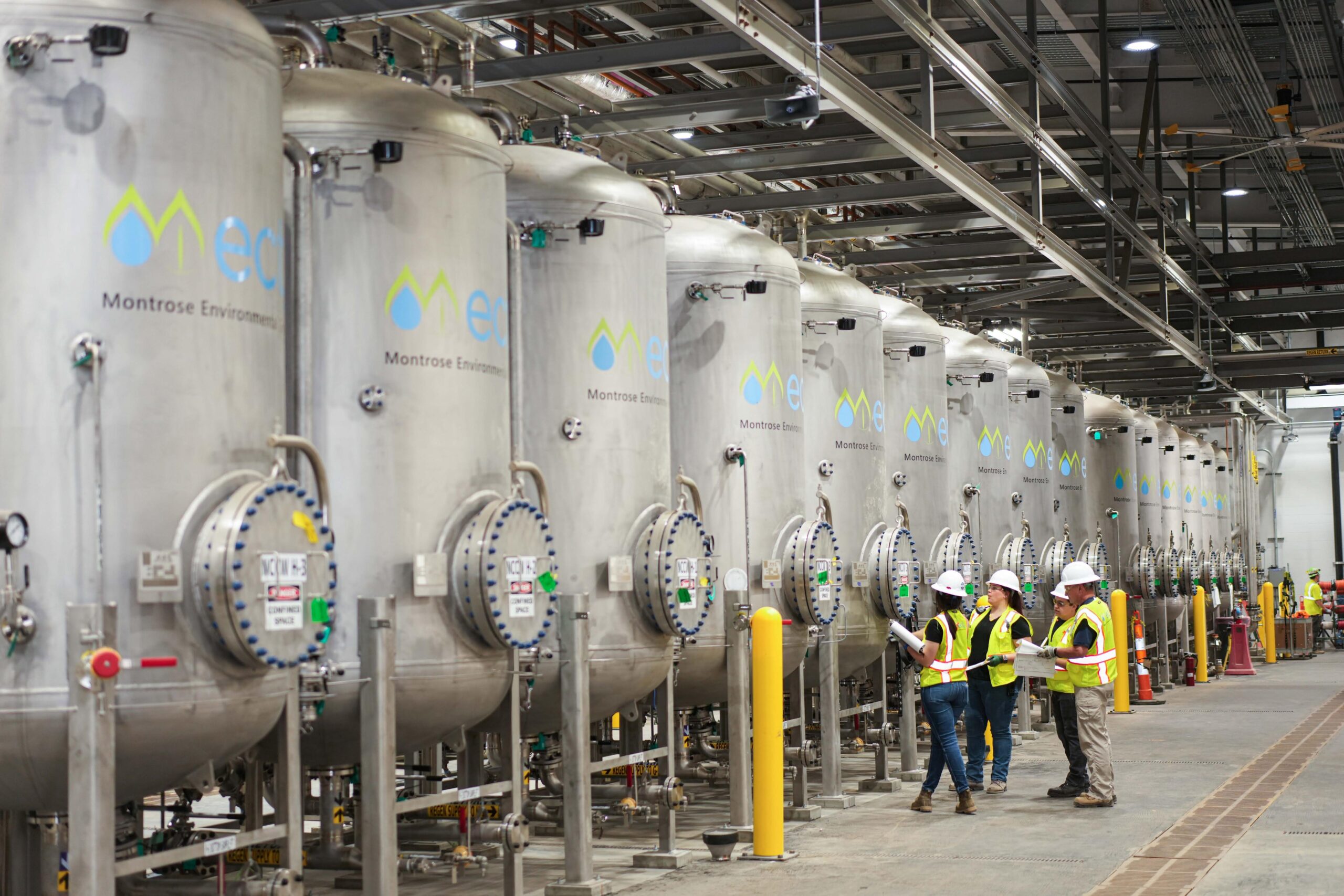Your Overview to PFAS Therapy Technologies and Benefits
The frequency of PFAS contamination in water sources requires a thorough understanding of offered therapy technologies. Each innovation not just targets particular PFAS substances but additionally plays a vital duty in enhancing general water quality and shielding environmental honesty.
Understanding PFAS Contamination
Understanding PFAS contamination is vital for resolving its pervasive influence on ecological and human health and wellness (m270 pfas treatment). Per- and polyfluoroalkyl substances (PFAS) are a group of synthetic chemicals commonly utilized in different industrial and consumer products due to their water- and grease-resistant properties. Commonly located in firefighting foams, non-stick cookware, and water-repellent fabrics, PFAS have entered the environment through production procedures, wastewater discharges, and seeping from garbage dumps
Once released, these substances persist in the environment, leading to extensive contamination of dirt and water sources. Their special chemical framework, defined by solid carbon-fluorine bonds, makes them resistant to degradation, causing a phenomenon understood as "forever chemicals." Subsequently, PFAS can accumulate in the body and the food chain, potentially causing negative health and wellness effects, including immune system disturbance, developmental concerns, and a boosted danger of specific cancers.
Governing firms and health companies are increasingly identifying the importance of PFAS contamination, triggering efforts to monitor, evaluate, and alleviate its impacts. Understanding the pathways of PFAS contamination is important for informing public policy and establishing reliable methods to protect both ecological and human health.
Overview of Therapy Technologies
Various therapy innovations have been established to deal with the obstacles presented by PFAS contamination in water and soil. These technologies can be extensively categorized into several categories, each with its one-of-a-kind systems and efficiency in removing PFAS compounds.
One popular technique is ion exchange, which utilizes resin products to record and get rid of PFAS from infected water. This approach is specifically efficient for short-chain PFAS and can achieve substantial decreases in focus levels. Another modern technology, progressed oxidation processes (AOPs), utilizes strong oxidants and ultraviolet light to damage down PFAS into less harmful materials. AOPs are suitable for dealing with a large range of PFAS substances however might call for cautious optimization to maximize efficiency.

Turned On Carbon Filtration
Activated carbon filtering is a commonly made use of technique for the elimination of PFAS from polluted water, recognized for its capacity to adsorb a wide series of natural substances. This technology employs triggered carbon, an extremely permeable product with a substantial area, which assists in the binding of PFAS particles via physical adsorption. The performance of turned on carbon in getting rid of PFAS is affected by several elements, consisting of the kind of carbon utilized, the call time, and the focus of PFAS in the water.
One of the advantages of triggered carbon purification is its adaptability; it can be executed in different configurations, such as granular turned on carbon (GAC) systems or powdered turned on carbon (POLITICAL ACTION COMMITTEE) systems. GAC systems are normally utilized in larger-scale applications, while PAC can be made use of in smaller sized or short-term configurations. The technology is relatively easy to operate and maintain, making it accessible for several water therapy facilities.

Ion Exchange Systems
Ion exchange systems stand for one more efficient approach for check that the elimination of PFAS from contaminated water, complementing techniques like activated carbon filtering. These systems operate the principle of trading ions in the water with ions held on a resin material. Ion exchange materials can be particularly created to target the negatively billed PFAS compounds, properly catching them and allowing cleaner water to pass through.
Among the main benefits of ion exchange systems is their capability to get rid of a vast array of PFAS, including both long-chain and short-chain versions. This versatility makes them suitable for various applications, ranging from metropolitan water treatment to More Info industrial processes. Additionally, ion exchange systems can frequently achieve lower discovery restrictions for PFAS contrasted to some various other therapy methods, thus enhancing water high quality.
Nonetheless, it is vital to check and manage the regrowth of ion exchange media, as the performance can decline in time as a result of saturation. Proper maintenance and substitute of the resin are crucial for sustaining the system's performance. Generally, ion exchange systems provide a reliable and reliable service for PFAS elimination, adding dramatically to safe alcohol consumption water standards and environmental management.
Advanced Oxidation Processes
Advanced Oxidation Processes (AOPs) use powerful oxidants to successfully break down PFAS substances in polluted water. These innovative treatment methods produce very reactive species, such as hydroxyl radicals, that can break down complicated PFAS molecules you can look here right into much less unsafe byproducts. m270 pfas treatment. AOPs normally utilize combinations of ultraviolet (UV) light, ozone, hydrogen peroxide, or Fenton's reagent, boosting the oxidation capacity and boosting deterioration effectiveness
The primary benefit of AOPs depends on their capacity to target a broad array of PFAS compounds, including both long-chain and short-chain variations. This convenience is vital, as PFAS contamination often includes blends of various compounds with varying chemical structures. AOPs can be incorporated right into existing water therapy systems, making them a useful option for lots of municipalities and sectors.
However, the implementation of AOPs can be resource-intensive, calling for cautious consideration of functional costs and power consumption. In addition, while AOPs work in breaking down PFAS, they might not completely remove all byproducts, demanding additional therapy actions - m270 pfas treatment. Overall, AOPs stand for an appealing avenue for addressing PFAS contamination, contributing to cleaner water sources and enhanced public health and wellness defense

Verdict
Finally, resolving PFAS contamination needs an extensive understanding of available therapy innovations. Activated carbon filtration, ion exchange systems, and progressed oxidation processes each present one-of-a-kind benefits for efficiently removing these unsafe compounds from water sources. By picking the proper innovation, communities can boost water high quality, safeguard public wellness, and alleviate the environmental threats connected with PFAS exposure. Proceeded research study and execution of these techniques are necessary for reliable monitoring of PFAS contamination in influenced areas.